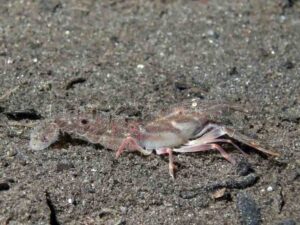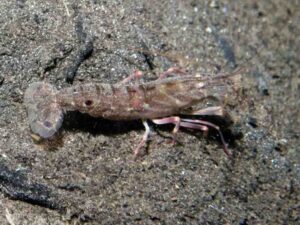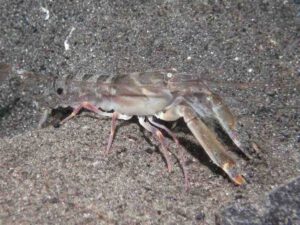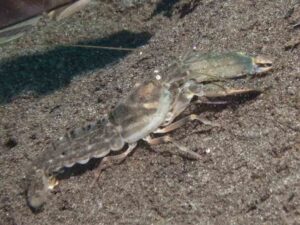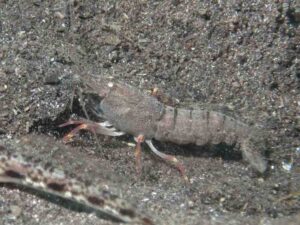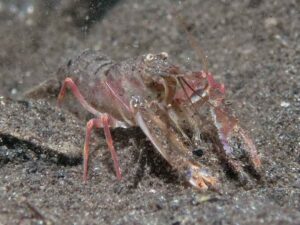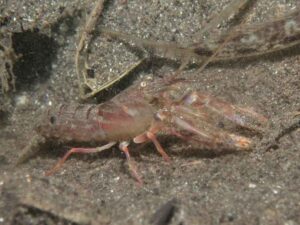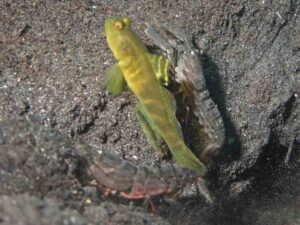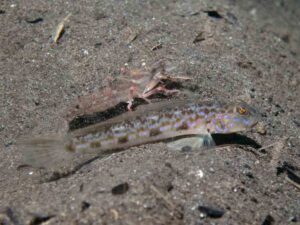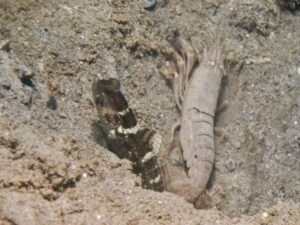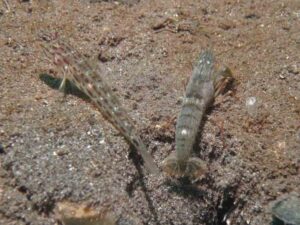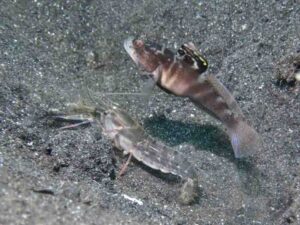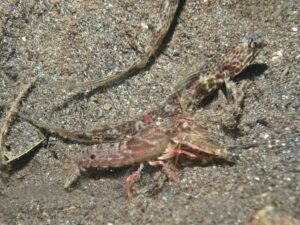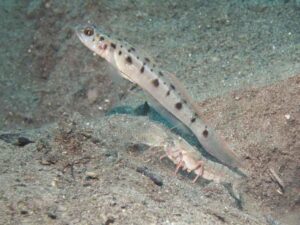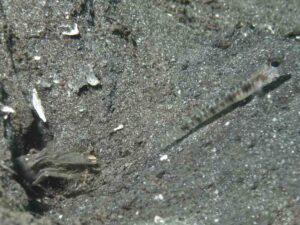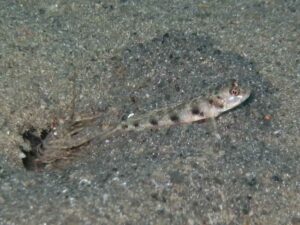Pigpen Snapping Shrimp
Alpheus cf rapacida complex
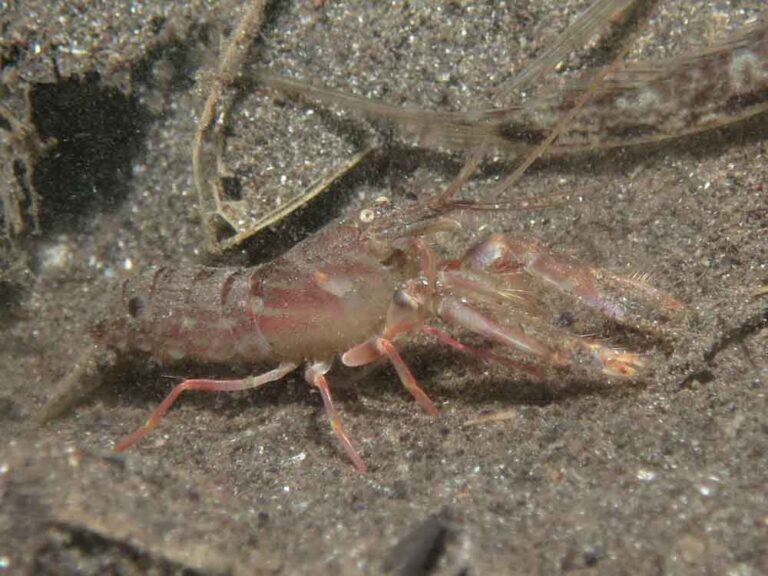
Pigpen Snapping Shrimp
Alpheus cf rapicida complex
undescribed
Description
Carapace: The carapace is red-to-grey brown above and cream below with three cream extensions running obliquely up and back into the brown. The anterior one incorporates a conspicuous “epaulette“ in white and viewed dorsally makes a horseshoe shape with its partner from the other side.
The other two pale carapace lines continued through the lateral part of the segments of the abdomen as a broken line or a series of spots. There is a short transverse line at each end of the abdominal segments. There is a bold black spot laterally on segment four.
The legs are red with yellow joints.
The rostrum is brown as are the antennae and antennules.
The pincers are uniformly brown with paler pinkish tips to the pollex and dactyl.
The tail fan is grey with brown telson and uropods. The distal exopod has a pale outlined black spot.
Identifying Features
A large shrimp red-brown in colour with very red legs. The prominent pale epaulette mark is useful, particularly as this shrimp’s other markings are usually obscured by silt.
Nomenclature
Undescribed species, no records apart from ours from the Solomon Islands. We think it may be. part of the Alpheus rapacida complex. It is probably related to the Diagonal Barred Snapping Shrimp. The common name is from Pigpen Bay, one of our favourite muck diving sites on Kolombangara Island in the Solomon Islands, where this shrimp was common.
Ecology
HABITAT
Preferred substrate Fine volcanic black silty sand with some coral debris and a lot of vegetation detritus in a sheltered bay with large sunken tree trunks.
Depth range 5 to 20 metres
Proximity to reef well away from the fringing reef
NATURAL HISTORY
In its preferred habitat, it is the commonest shrimp but it seems to be restricted in its distribution.
Associates with seven species of shrimpgoby belonging to five genera. These are all obligate partnerships, that is to say, there is a consistent pattern of behaviour and contact seen in all true shrimp-and-goby partnerships.
A most interesting observation is that we have seen this shrimp, which is notably unselective in its partnerships, form a facultative relationship with Acentrogobius cenderawasih a species recently described by Allen and Erdmann (2012) from Indonesia and observed by us in the Solomon Islands.
In a facultative relationship, the shrimp maintains less antenna contact and the goby tends to spend time away from the burrow, making communication inconsistent and behaviour unpredictable. This may represent an intermediate stage in the development of an obligate relationship.
The behaviour and ecology of Acentrogobius cenderawasih are described in the species account.
Distribution
Published distribution: None.
Our records: Solomon Islands; Ghizo, Pigpen Bay on Kolombangara Island.
Papua New Guinea; Talilli Bay in New Britain.
Associated Goby species
Associated Shrimpgobies (eight species)
Acentrogobius cenderawasih, Cenderawasih Goby
Cryptocentrus sericus, Ventral-barred Shrimpgoby
Ctenogobiops crocineus, Silverspot Shrimpgoby
Mahidolia mystacina, Smiling Shrimpgoby
Tomiyamichthys tanyspilus, Longspot Shrimpgoby
Vanderhorstia ambanoro, Twinspot Shrimpgoby
Vanderhorstia auronotata, Gold-Marked Shrimpgoby
Vanderhorstia phaeosticta, Yellowfoot Shrimpgoby

